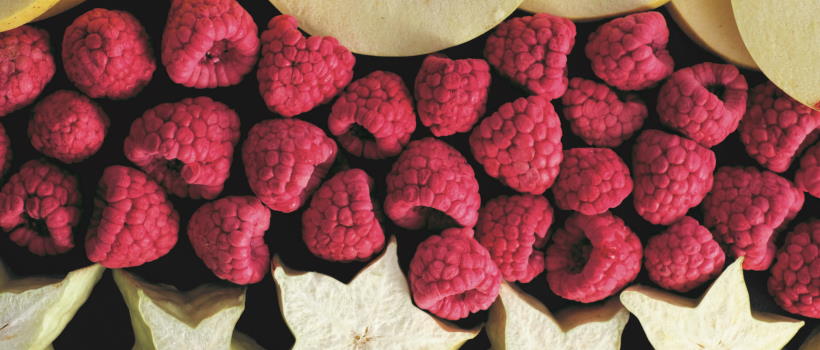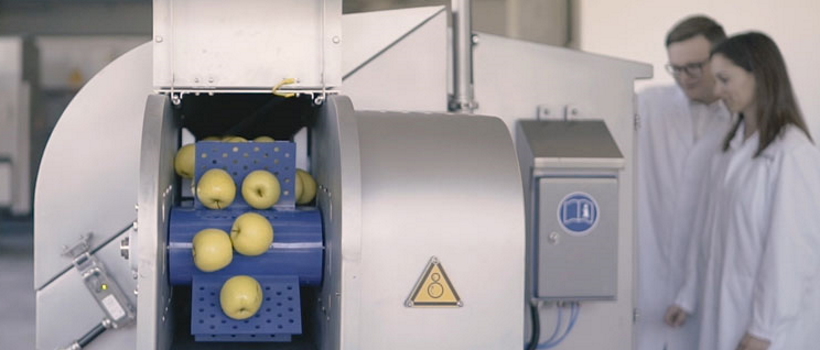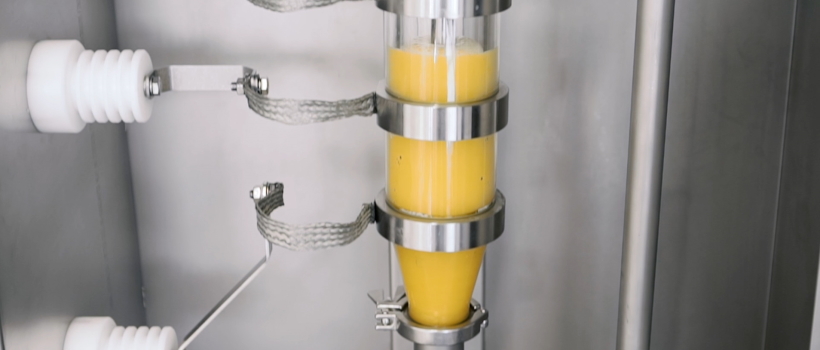
Pulsed electric field processing: the potential in food processing
10 January 2022 | Danny Bayliss, New Technology Lead
Pulsed electric field (PEF) is a well-known non-thermal food preservation technique that utilises high voltage fields to generate pores in cell structures. It has shown significant uptake for extraction applications where it can improve yields and has been widely used in the snacking industry to soften vegetable tissues.
Did you know that softening tissues has a range of processing benefits including sustainability savings and improved shelf-life? This article looks at the principles, considerations, and benefits of this innovative solution.
Mechanism of PEF
PEFs generate pores in cell structures through the interaction of the ions inside and outside the cell. The application of high voltage pulses results in the movement of positive and negative charged particles to their respective electrodes. When the field strength exceeds the transmembrane potential of the microorganism, pore formation starts, forcing the cell membranes to open. The formation of pores inactivates microbes as they rupture open. This is particularly important as it can assist in the destruction of harmful microbes during the processing of food.
Processing considerations
The current setup
PEF does not lend itself to the inactivation of bacterial spores, with the technology being typically only used as a pasteurisation process where the product will have chilled shelf-life. If PEF were to be used for bacterial spore activation, it would need to be combined with high temperatures (incoming temp >75°C). As a result, the product formulation, as well as the chilled storage for products on the market, need to be sufficiently controlled to prevent spore growth in PEF processed products.
Field strengths
As it stands, the power supplies and field strengths that are needed to achieve microbial inactivation, currently match the requirements of applications that involve small electrode gaps (10 mm or less). Applications of PEF, therefore, include the processing of homogeneous pumpable products with particles much smaller than the electrode gap, so that bridging and blockages are prevented. As the type of target cells gets smaller the required field strengths get higher to ensure pore formation. Lower field strengths with the combination of additional microbial hurdles may open up the potential for larger particulates if microbial control can be realised.
Conductivity and reduced inactivation
It is important to ensure that natural product variability is considered, as a by-product of sourcing from different countries or changeable conditions during a growing season may result in difference is the final products conductivity. The conductivity of the product being processed needs to be considered as part of the validation study and the extremes of the range tested. Research has shown that an increased conductivity for the same applied field strength can result in reduced inactivation, so it is important to test for the worst-case during pathogen challenge studies.
The impact of temperature and consideration of enzymes
The product should be preheated to 35-40°C prior to PEF application, as the raised temperatures can have a synergistic effect on microbial inactivation – The impact of the two treatments when applied together is much greater than the effect of the two treatments applied separately, in isolated stages. The combination of low inlet temperatures will need to be controlled and monitored as part of the process and the lowest inlet temperature which may occur in production should be validated. Furthermore, although enzymes are not a safety concern, manufacturers should be aware that PEF will have limited impacts on enzyme activity. This may impact the final product quality depending on the enzymes and products. Manufacturers may be able to tailor the inlet and outlet temperatures to help inactivate enzymes.
Voltage characteristic
Monitoring of the voltage pulses shape, intensity and frequency will be important for the validation studies to ensure the manufacturer has some critical parameters they can monitor to inform them that they are operating an effective process according to the validation studies.
Evidencing microbial inactivation
As the technology does not have a long history of product and process impacts on microbial inactivation, compared to more traditional thermal processing, it would be prudent for manufacturers to demonstrate pathogen inactivation and identifying suitable product and pathogen surrogates for an in-factory validation when commissioning a system.

Shelf-life
Higher field strengths and higher inlet temperatures (up to 60°C max), or a combination of the two, can influence the treatment intensity and as a result the shelf life achieved by a product. Natural pressed juices if correctly controlled may have 5-7 days shelf life. The shelf-life of high acid products (pH<4.5) in fresh juices can potentially be extended to 3.5 weeks (low intensity application) to up to 8 weeks (high intensity process). As the pH increases to >4.5 there are challenges with spores and greater chances of pathogens growing in the products. Depending on the treatment intensity the products shelf life can be in the order of 1.5 – 4 weeks.

Process Benefits
While there are process considerations for manufacturers to be aware of, and to test for, there are processing benefits they can gain in return.
The low temperature nature of this technology has been shown to open up new NPD opportunities for manufacturers. Whilst ensuring product safety, manufacturers can also maintain the quality of their products. Thermally sensitive components like natural green colours can be better protected with non-thermal technologies, which would be discoloured by thermal methods. The shelf-life extension from the process can allow for better export potential allowing manufacturers to reach further markets.
As the technology is growing in juice applications the throughputs have also been improving, with up to 10000 L/hr continuous processing possible with some equipment providers. Continuous processing allows different packaging formats to be used, allowing manufacturers to select the best packaging format for their products.
In addition, the associated energy can be lower and running costs comparable with a thermal process, which makes this technology one to explore for generating more premium quality products.
New Technologies Research
The New Technologies Team at Campden BRI research emerging technologies of interest to the food and drink industry as part of an ongoing member funded research programme. We are always looking for feedback on technologies to explore or review. Submit your suggestions to newtechnologies@campdenbri.co.uk so we can investigate technologies that interest you.
How can we help you?
If you’d like to find out more about pulsed electric field processing, contact our support team to find out how we can help.
Are you a Campden BRI member who attends the MIG meetings?
- If not, you’re missing out on a whole host of exclusive benefits such as learning from industry-leading experts and networking with peers to overcome your challenges.







